Opinion & Analysis
Korea’s answer to help grow the game
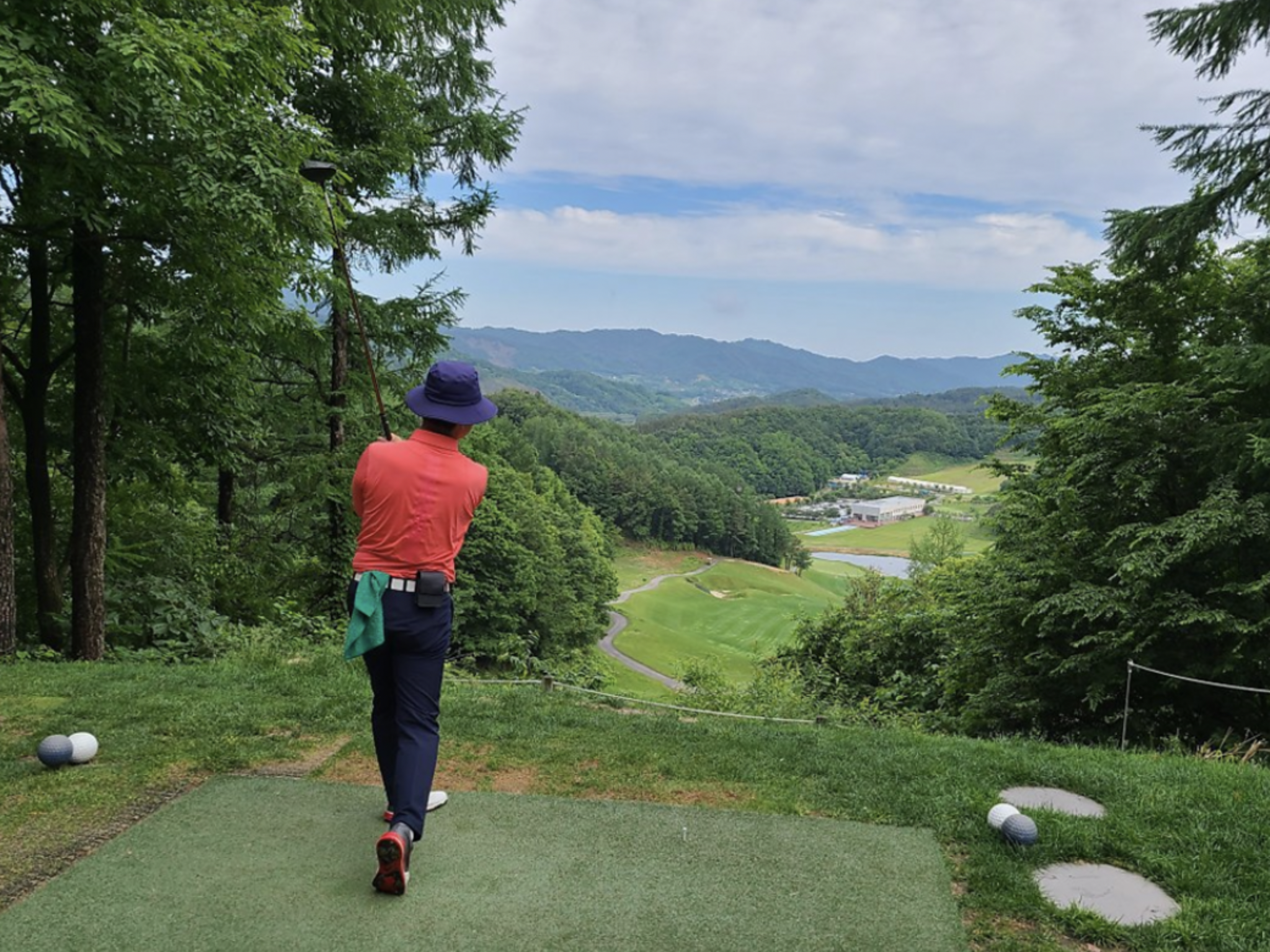
When the golfing world was first introduced to Mark Broadie’s Strokes Gained Index (SGI) in 2011, it forever changed the way we look at the game. In direct contrast to legendary Bobby Locke’s iconic phrase “drive for show, putt for dough,” the new method showed that driving the ball well was actually the bigger factor in lowering scores.
At first, I recall thinking that it couldn’t be right. After all, the longest drive and the shortest putt each count the same one stroke, right? But then again, where are you more likely to make a birdie from if your ball is 50 yards and 150 yards from the pin, respectively?

Should the new saying be “Putt for show, Drive for dough?”
Even before Broadie’s method showed the advantages of longer drives, nearly all club and ball manufacturers have been focused on marketing distance. In response, many golf courses tried to lengthen the course to keep the game challenging. But no matter how long golf courses became, long bombers like Bryson and Dustin continued to make short work of them reaching “monstrous” par 5s in two with an 8- iron. It was only a matter of time before golf’s governing bodies declared that things had gone too far.
- Related: Golf in Korea during COVID-19
I understand where the USGA is coming from. But surely there are other ways to make professional golf more challenging than limiting golf ball distance for everyone. After all, why penalize average Joes like me who can barely drive 250? Instead, let’s make the course set up more difficult for professional tournaments and let the rest of us continue our valiant struggle with all the help we can get.
With all the heated online arguments for and against USGA’s stance on distance, however, I found it odd that it has never been an issue here in Korea. In fact, whenever I tried to discuss the topic and how it's dividing golfers in the West, no one here seemed to bat an eye. I too soon came to dismiss it as a non-issue, but after subconsciously mulling about it for a while, I came up with an interesting theory.
Could it be that the courses here are already hard enough without having to add extra sandbags around our ankles?
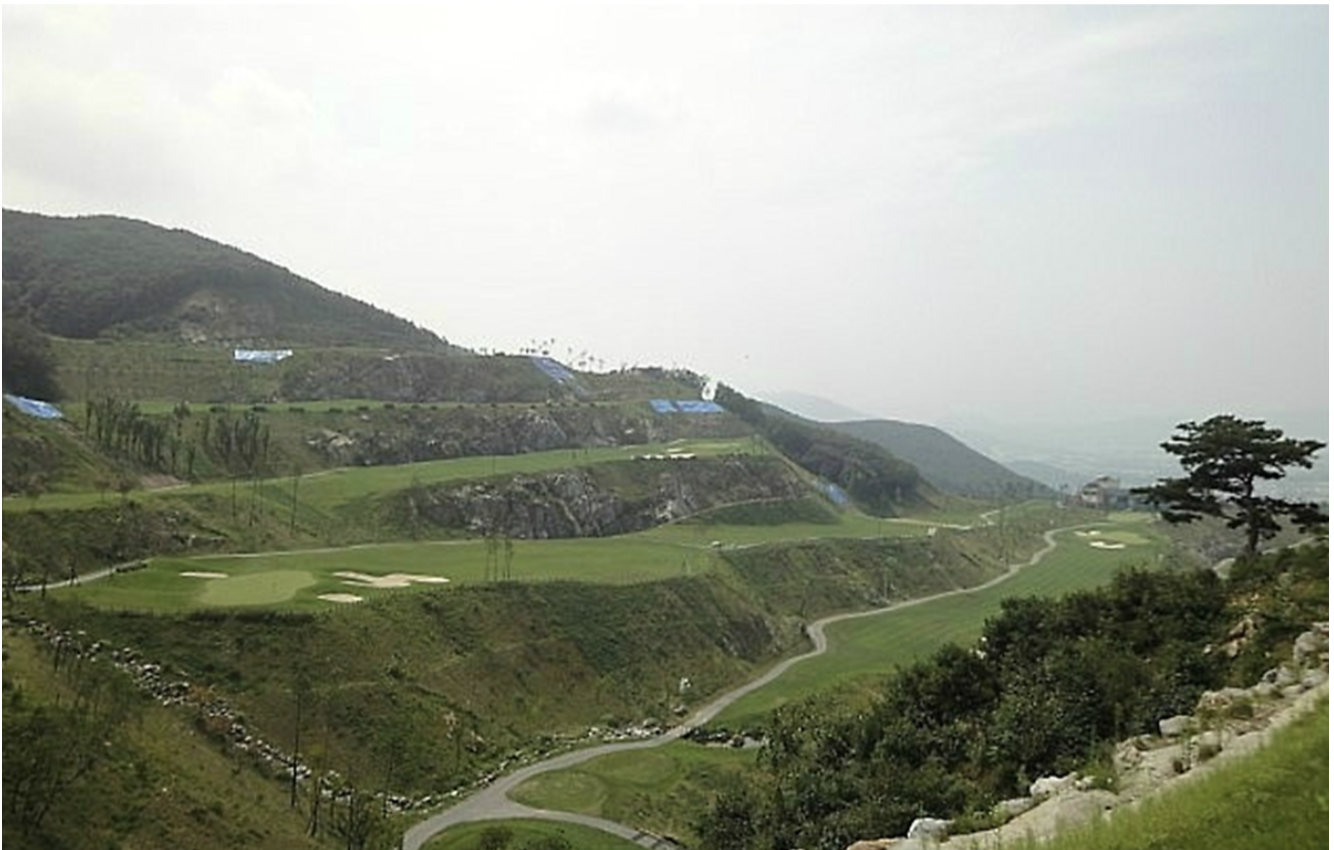
Flat land for building a golf course is rare in Korea
To be sure, I’m not trying to compare Korean courses to beasts like Bethpage Black or Whistling straits. However, it is my contention that most Korean courses have very narrow fairways and an over-abundance of penalty areas in comparison to their Western counterparts. As such, Korean courses support my claim that difficult setups can make the game plenty challenging without limiting equipment distance. Plus, some of the course features and local rules here also act to help grow the game by speeding up play considerably.
Size Matters
To give you some perspective on size, South Korea is a small peninsula about the size of Indiana with mountains covering 70 percent of the country. As a result, the majority of 550+ golf courses here are carved out on top or steep sides of mountains. A typical golf hole here features a hill along one side of the hole and a steep drop-off on the other side. So if a tee shot happens to stray a little off the narrow fairway, the ball is usually declared to be out of bounds or lost.
When I first began playing here in 2001, my first impression was that the courses seemed relatively short and easy. Back in Canada, if a tee shot strays onto the adjacent hole or under a tree, it would simply make for a fun and challenging attempt to scramble for par, right? Nope. Not here. Uh-uh. With almost every hole lined on both sides with OB or hazard stakes, I realized quickly that golf here required a very different approach than what I was used to.

Most of Korea’s 550+ golf courses are carved on top or sides of mountains.
At first, there seemed to be no reason or rhyme as to why the courses had so many penalty areas. In particular, what frustrated me most was having an easy wedge over relatively short trees from an adjacent hole; only to be told it was out of bounds. What good is the ability to pull off amazing Seve-esque recovery shots if I’m not even given a chance to attempt them in the first place?
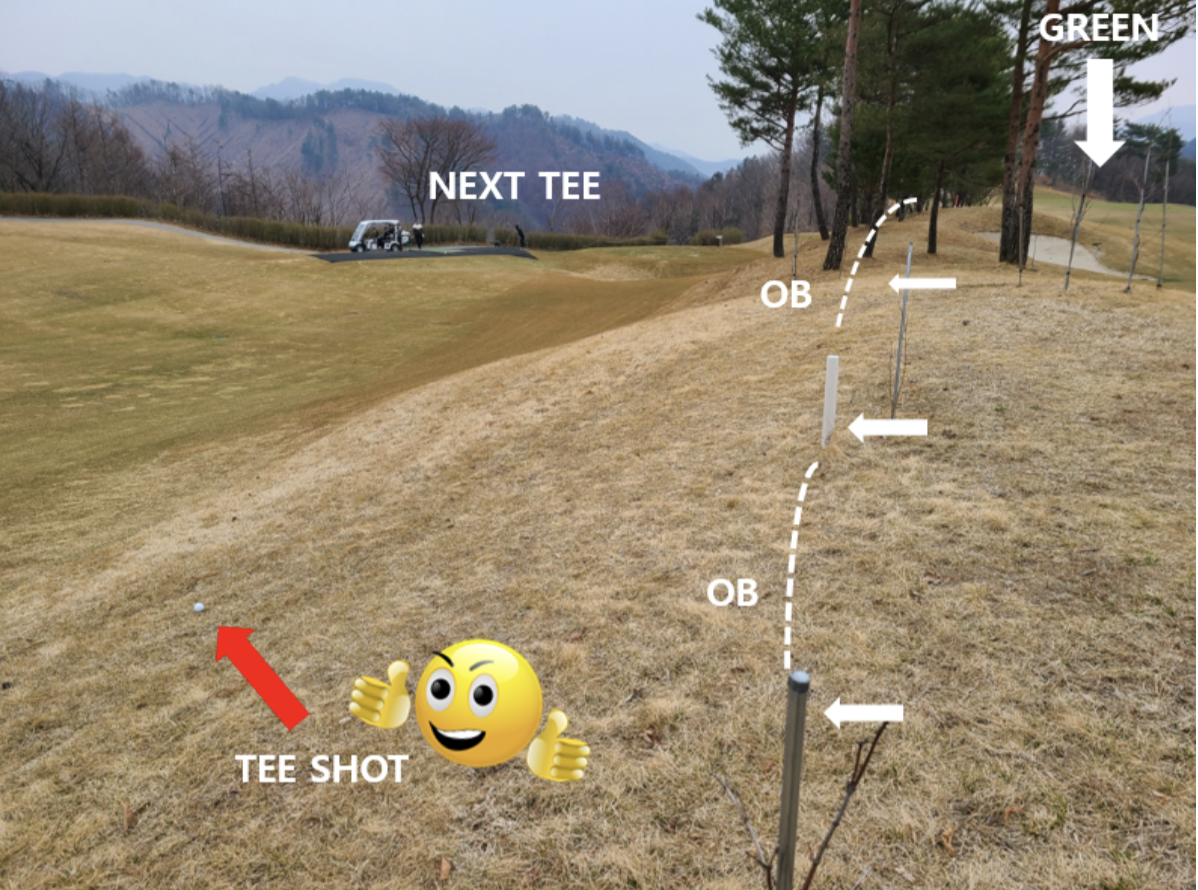
Easy 9 iron to the green? Nope. OB for D-bogey or worse.
Inevitably, I soon developed a severe case of the driver yips in trying to keep my ball in play. No matter how I tried, every round would have at least two or three balls out of bounds. My handicap quickly grew from being a toddler to the legal drinking age, and my foursome began to doubt I had ever broken 80 before. Likewise, my preference for long-distance quickly took a backseat in favor of accurate shot-making.
To be sure, I’m not suggesting a dozen new penalty areas be added or your golf courses are built on the sides of mountains. I’m just saying that before any definitive decision is made on the equipment side of golf, I hope the powers that be can first explore diverse course setups at iconic tournament courses to challenge the best players in the world. After all, there are so many more amateur golfers than professionals, and we certainly need all the help we can get.

Just your typical tee shot with 90 meter drop, OB on both sides to a sloping fairway. No pressure.
Course setup to grow the game?
Aside from an abundance of OB stakes, Korean courses also have several features and local rules which may baffle newcomers. Even though some of them may not be welcomed in all parts of the world, and are certainly not practiced for pro tournament play here, they have undeniably helped the game grow in Korea by speeding up play immensely.

OB tees to save time and ego.
Your home course probably has a drop area on par 3s where hazards come into play. The same applies here but with one big difference in that, we also have a designated drop area for par 4s and par 5s. You see, when a tee shot’s fate is in question, amateur golfers are urged to play from a special set of tees 220~250 yards ahead. So, rather than playing a provisional ball, the golfer would be playing their 3rd or 4th shot from these forward tees, depending on whether the ball landed in a
hazard or out of bounds.
Although it took a bit of getting used to, I have found this common local rule to help in two ways here. One, it speeds up the pace of play considerably; and two, it helps to preserve the sanity of golfers from having to re-tee with the potential to hit multiple balls out of bounds.
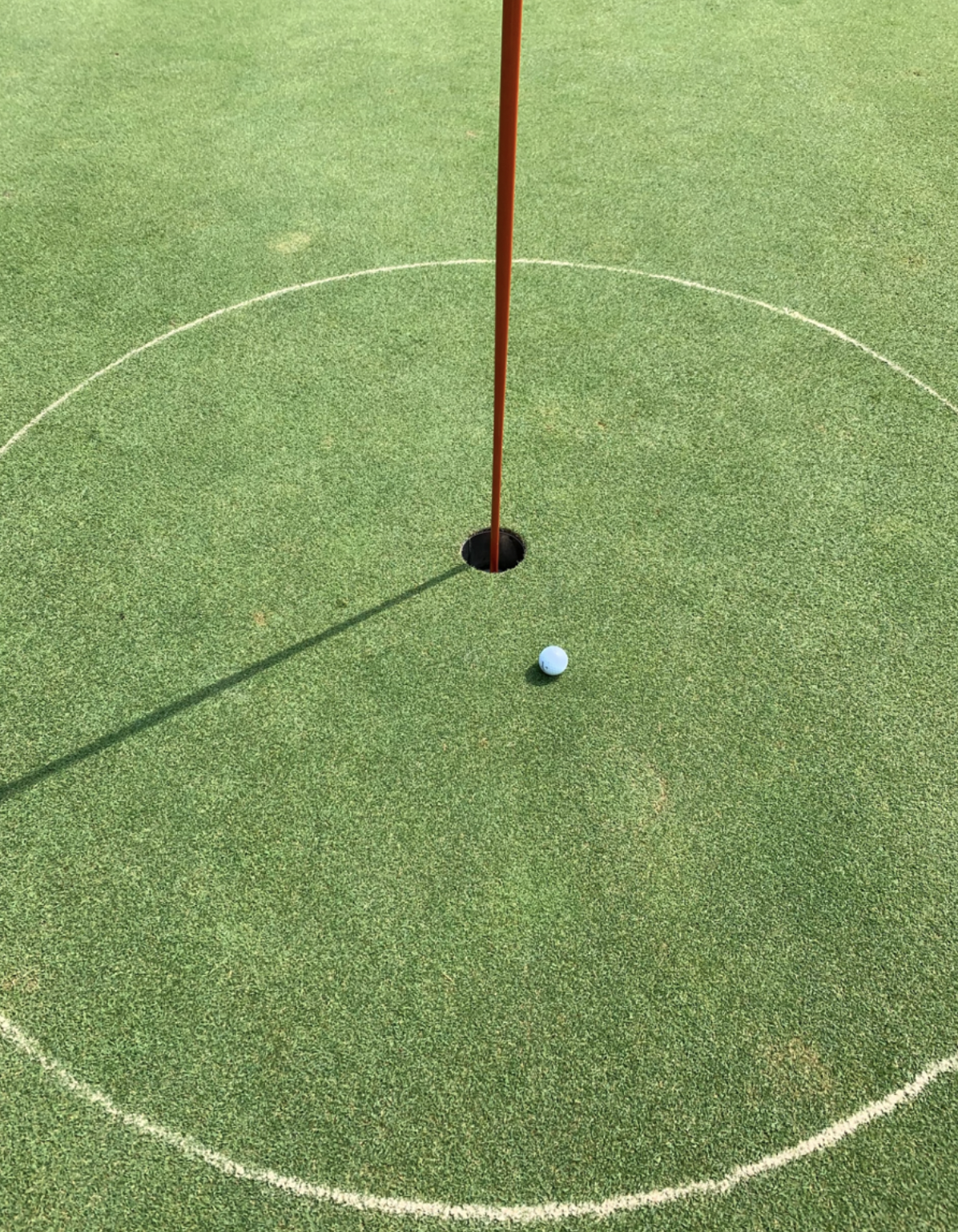
Not gonna lie. These look great with hard breaking downhill putts.
I can’t recall if I’ve ever encountered an actual gimme circle back when growing up in Canada, but more often than not, golfers here will see a circle drawn around the hole cup ranging in radius from 1~1.5m. The obvious intent is that if the ball ends up inside the circle, the next putt is considered a gimme, and the golfer can pick up the ball. At the start of a round, the foursome can decide whether they will put the circle in play or hole out each time.
For the purist, the length of the gimme circle may seem absurd, but I can attest that it does wonders for one’s ego and score, and keeps arguments to a minimum. Of course, it also helps to speed up play.
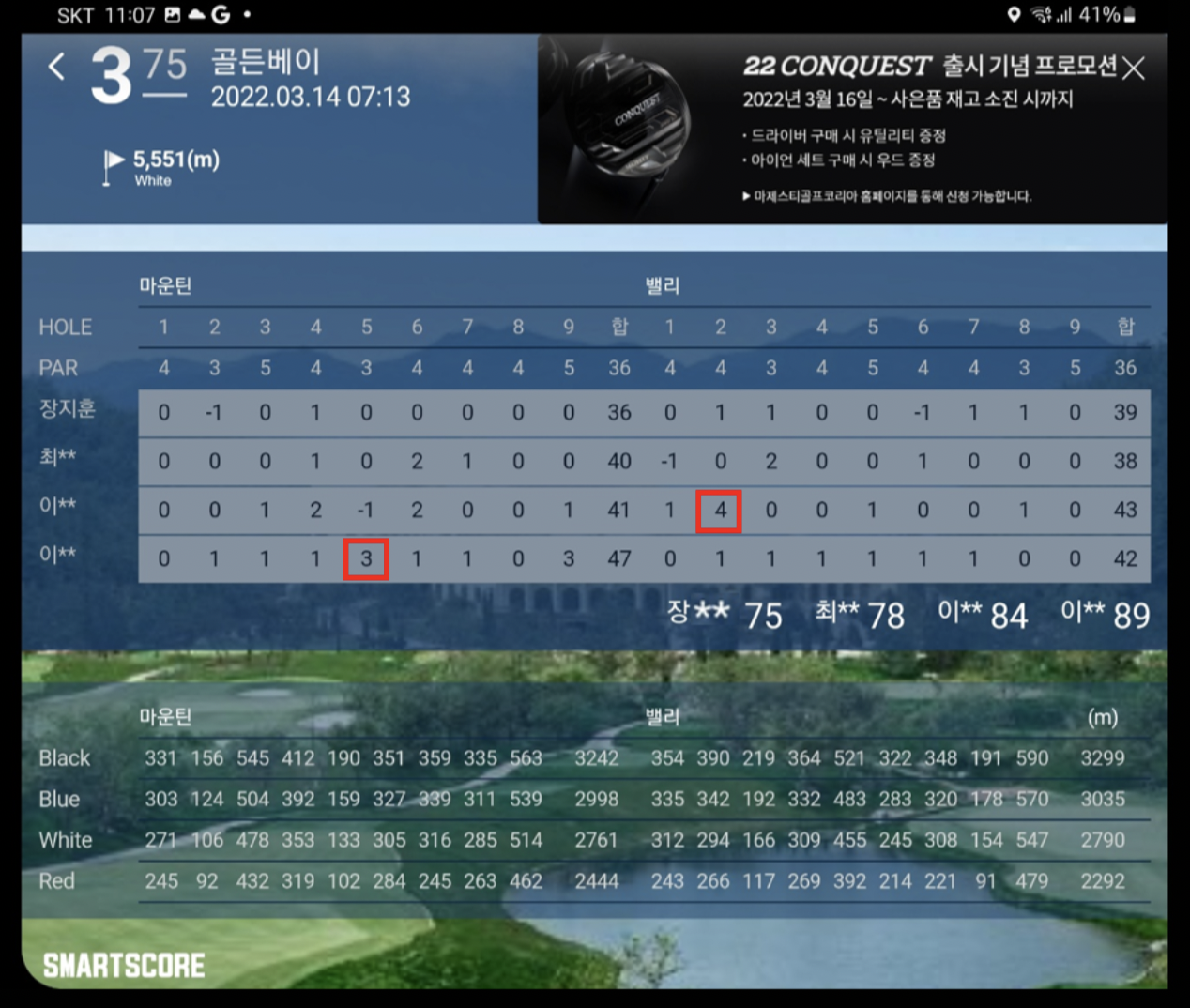
Notice something with the first and last holes too? That’s for another time.
Another aspect of golf that may raise some eyebrows out there is our concept of “double par”. It is common practice here for strokes to be counted only up to double the par of the hole played. For example, the maximum score on a par 3 would be a triple, a quadruple for a par 4, and a quintuple bogey for a par 5.
So even if you were to dunk three balls at the treacherous 17th hole at Sawgrass, the maximum score would be a six (provided that the course was in Korea). Wild stuff, huh? Can you imagine how many pros would love to settle for a triple at that hole during the Players Championship this year?
Again, the main idea for this practice is to speed up play, save some golf balls, and keep one’s handicap comfortably vague for sandbagging purposes.
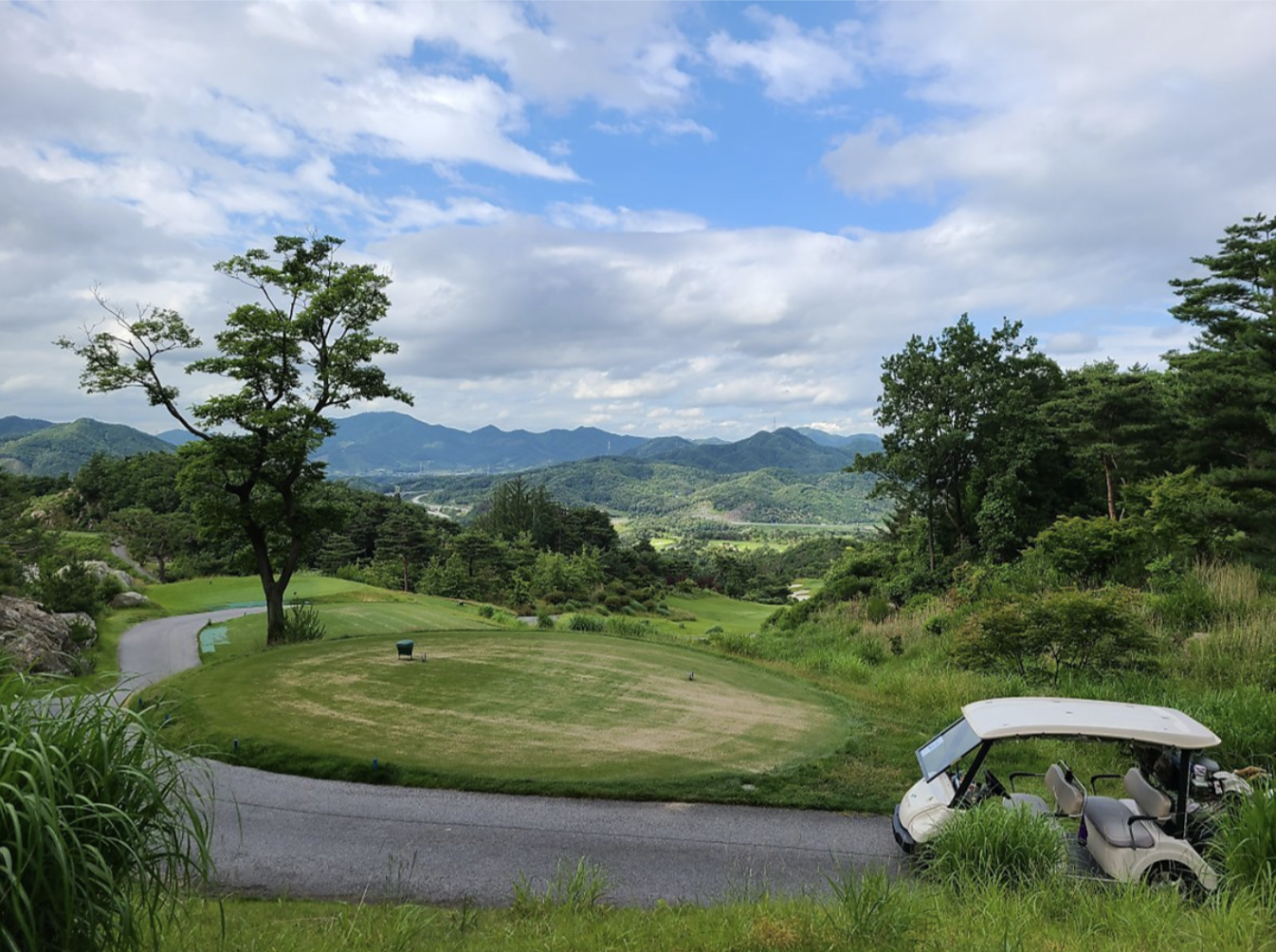
Carts prevent cardiac arrest.
Last but not least, over 90% of Korea’s public and private courses require golfers to ride a 5-person power cart and employ a caddie with the cost shared among the foursome. What if one doesn't want to ride a cart, or use the services of a caddie?
Unfortunately, it is not a choice at these courses but there are some darn good reasons too.
First, the mountainous topography of Korean courses makes it incredibly hard to walk and play18 holes. The distance between holes can literally be a mile over incredibly steep hills or winding paths down a side of a mountain. So unless you are training for the Iron Man triathlon, there is no shame in riding the cart here. Even for a professional tournament, I understand that special measures are taken to protect the players and caddies in case such a course is played.
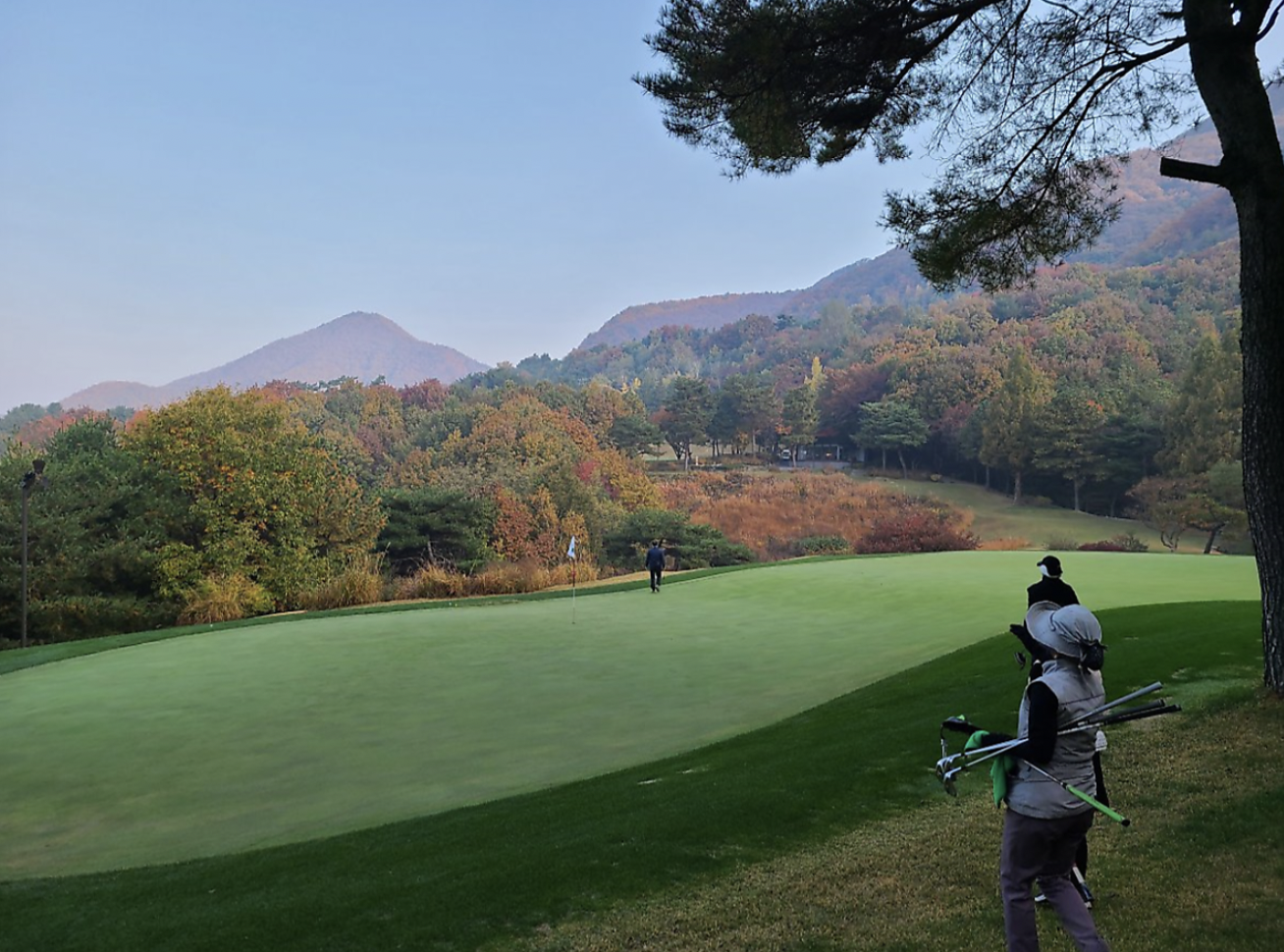
Super caddie in action. Not only does she memorize who uses which clubs and wedges for what
shots, she carries up to 12 clubs at a time for your convenience. Bravo.
Caddies also play a pivotal role in Korean golf culture. Usually, a lone caddie is assigned to a foursome at the start of the round. They driving the cart, cleaning and fetching clubs for all four players, explaining the layout and potential dangers at each hole, and providing yardages, and reading the greens.
It is not an easy task to say the least, but that’s not nearly all. The caddies are also responsible for the safety of the golfers while on the course, and to ensure that the pace of play is maintained in a polite and professional manner (I’m sure they were the most ecstatic when the rule to tend the pin was eliminated). Without a doubt, the caddies here are the true unsung heroes behind the recent growth spurt of golf in Korea. If it were not for them, I know that most of us would be either lost on course
or stuck behind first-timers struggling to play 18 under 6-hours. They deserve every penny they earn.
So there you have it. If speeding up play really helps to grow the game of golf, then the local rules that I have described above will definitely make a difference.
Which one would you be willing to try? Which ones will you fight to your dying breath as a golfer? Please comment below!
For a detailed look at a round of Korean style golf, check out my previous article: “A typical day of Korean golf, Gangnam style”
- LIKE94
- LEGIT3
- WOW8
- LOL3
- IDHT0
- FLOP1
- OB1
- SHANK4
Instruction
The Wedge Guy: The easiest-to-learn golf basic

My golf learning began with this simple fact – if you don’t have a fundamentally sound hold on the golf club, it is practically impossible for your body to execute a fundamentally sound golf swing. I’m still a big believer that the golf swing is much easier to execute if you begin with the proper hold on the club.
As you might imagine, I come into contact with hundreds of golfers of all skill levels. And it is very rare to see a good player with a bad hold on the golf club. There are some exceptions, for sure, but they are very few and very far between, and they typically have beat so many balls with their poor grip that they’ve found a way to work around it.
The reality of biophysics is that the body moves only in certain ways – and the particulars of the way you hold the golf club can totally prevent a sound swing motion that allows the club to release properly through the impact zone. The wonderful thing is that anyone can learn how to put a fundamentally sound hold on the golf club, and you can practice it anywhere your hands are not otherwise engaged, like watching TV or just sitting and relaxing.
Whether you prefer an overlap, interlock or full-finger (not baseball!) grip on the club, the same fundamentals apply. Here are the major grip faults I see most often, in the order of the frequency:
Mis-aligned hands
By this I mean that the palms of the two hands are not parallel to each other. Too many golfers have a weak left hand and strong right, or vice versa. The easiest way to learn how to hold the club with your palms aligned properly is to grip a plain wooden ruler or yardstick. It forces the hands to align properly and shows you how that feels. If you grip and re-grip a yardstick several times, then grip a club, you’ll see that the learning curve is almost immediate.
The position of the grip in the upper/left hand
I also observe many golfers who have the butt of the grip too far into the heel pad of the upper hand (the left hand for right-handed players). It’s amazing how much easier it is to release the club through the ball if even 1/4-1/2″ of the butt is beyond the left heel pad. Try this yourself to see what I mean. Swing the club freely with just your left hand and notice the difference in its release from when you hold it at the end of the grip, versus gripping down even a half inch.
To help you really understand how this works, go to the range and hit shots with your five-iron gripped down a full inch to make the club the same length as your seven-iron. You will probably see an amazing shot shape difference, and likely not see as much distance loss as you would expect.
Too much lower (right) hand on the club
It seems like almost all golfers of 8-10 handicap or higher have the club too far into the palm of the lower hand, because that feels “good” if you are trying to control the path of the clubhead to the ball. But the golf swing is not an effort to hit at the ball – it is a swing of the club. The proper hold on the club has the grip underneath the pad at the base of the fingers. This will likely feel “weak” to you — like you cannot control the club like that. EXACTLY. You should not be trying to control the club with your lower/master hand.
Gripping too tightly
Nearly all golfers hold the club too tightly, which tenses up the forearms and prevents a proper release of the club through impact. In order for the club to move back and through properly, you must feel that the club is controlled by the last three fingers of the upper hand, and the middle two fingers of the lower hand. If you engage your thumbs and forefingers in “holding” the club, the result will almost always be a grip that is too tight. Try this for yourself. Hold the club in your upper hand only, and squeeze firmly with just the last three fingers, with the forefinger and thumb off the club entirely. You have good control, but your forearms are not tense. Then begin to squeeze down with your thumb and forefinger and observe the tensing of the entire forearm. This is the way we are made, so the key to preventing tenseness in the arms is to hold the club very lightly with the “pinchers” — the thumbs and forefingers.
So, those are what I believe are the four fundamentals of a good grip. Anyone can learn them in their home or office very quickly. There is no easier way to improve your ball striking consistency and add distance than giving more attention to the way you hold the golf club.
More from the Wedge Guy
- The Wedge Guy: Golf mastery begins with your wedge game
- The Wedge Guy: Why golf is 20 times harder than brain surgery
- The Wedge Guy: Musings on the golf ball rollback
- LIKE83
- LEGIT13
- WOW5
- LOL1
- IDHT0
- FLOP4
- OB1
- SHANK8
19th Hole
Vincenzi’s 2024 Texas Children’s Houston Open betting preview

As the Florida swing comes to an end, the PGA Tour makes its way to Houston to play the Texas Children’s Houston Open at Memorial Park Golf Course.
This will be the fourth year that Memorial Park Golf Course will serve as the tournament host. The event did not take place in 2023, but the course hosted the event in 2020, 2021 and 2022.
Memorial Park is a par-70 layout measuring 7,432 yards and features Bermudagrass greens. Historically, the main defense for the course has been thick rough along the fairways and tightly mown runoff areas around the greens. Memorial Park has a unique setup that features three Par 5’s and five Par 3’s.
The field will consist of 132 players, with the top 65 and ties making the cut. There are some big names making the trip to Houston, including Scottie Scheffler, Wyndham Clark, Tony Finau, Will Zalatoris and Sahith Theegala.
Past Winners at Memorial Park
- 2022: Tony Finau (-16)
- 2021: Jason Kokrak (-10)
- 2020: Carlos Ortiz (-13)
In this article and going forward, I’ll be using the Rabbit Hole by Betsperts Golf data engine to develop my custom model. If you want to build your own model or check out all of the detailed stats, you can sign up using promo code: MATTVIN for 25% off any subscription package (yearly is best value).
Key Stats For Memorial Park
Let’s take a look at several metrics for Memorial Park to determine which golfers boast top marks in each category over their last 24 rounds:
Strokes Gained: Approach
Memorial Park is a pretty tough golf course. Golfers are penalized for missing greens and face some difficult up and downs to save par. Approach will be key.
Total Strokes Gained: Approach per round in past 24 rounds:
- Tom Hoge (+1.30)
- Scottie Scheffler (+1.26)
- Keith Mitchell (+0.97)
- Tony Finau (+0.92)
- Jake Knapp (+0.84)
Strokes Gained: Off the Tee
Memorial Park is a long golf course with rough that can be penal. Therefore, a combination of distance and accuracy is the best metric.
Total Strokes Gained: Off the Tee per round in past 24 rounds:
- Scottie Scheffler (+0.94)
- Kevin Dougherty (+0.93)
- Cameron Champ (+0.86)
- Rafael Campos (+0.84)
- Si Woo Kim (+0.70)
Strokes Gained Putting: Bermudagrass + Fast
The Bermudagrass greens played fairly fast the past few years in Houston. Jason Kokrak gained 8.7 strokes putting on his way to victory in 2021 and Tony Finau gained in 7.8 in 2022.
Total Strokes Gained Putting (Bermudagrass) per round past 24 rounds (min. 8 rounds):
- Adam Svensson (+1.27)
- Harry Hall (+1.01)
- Martin Trainer (+0.94)
- Taylor Montgomery (+0.88)
- S.H. Kim (+0.86)
Strokes Gained: Around the Green
With firm and undulating putting surfaces, holding the green on approach shots may prove to be a challenge. Memorial Park has many tightly mowed runoff areas, so golfers will have challenging up-and-down’s around the greens. Carlos Ortiz gained 5.7 strokes around the green on the way to victory in 2020.
Total Strokes Gained: Around the Green per round in past 24 rounds:
- Mackenzie Hughes (+0.76)
- S.H. Kim (+0.68)
- Scottie Scheffler (+0.64)
- Jorge Campillo (+0.62)
- Jason Day (+0.60)
Strokes Gained: Long and Difficult
Memorial Park is a long and difficult golf course. This statistic will incorporate players who’ve had success on these types of tracks in the past.
Total Strokes Gained: Long and Difficult in past 24 rounds:
- Scottie Scheffler (+2.45)
- Ben Griffin (+1.75)
- Will Zalatoris (+1.73)
- Ben Taylor (+1.53)
- Tony Finau (+1.42)
Course History
Here are the players who have performed the most consistently at Memorial Park.
Strokes Gained Total at Memorial Park past 12 rounds:
- Tyson Alexander (+3.65)
- Ben Taylor (+3.40)
- Tony Finau (+2.37)
- Joel Dahmen (+2.25)
- Patton Kizzire (+2.16)
Statistical Model
Below, I’ve reported overall model rankings using a combination of the five key statistical categories previously discussed.
These rankings are comprised of SG: App (24%) SG: OTT (24%); SG: Putting Bermudagrass/Fast (13%); SG: Long and Difficult (13%); SG: ARG (13%) and Course History (13%)
- Scottie Scheffler
- Wyndham Clark
- Tony Finau
- Joel Dahmen
- Stephan Jaeger
- Aaron Rai
- Sahith Theegala
- Keith Mitchell
- Jhonnatan Vegas
- Jason Day
- Kurt Kitayama
- Alex Noren
- Will Zalatoris
- Si Woo Kim
- Adam Long
2024 Texas Children’s Houston Open Picks
Will Zalatoris +2000 (Caesars)
Scottie Scheffler will undoubtedly be difficult to beat this week, so I’m starting my card with someone who I believe has the talent to beat him if he doesn’t have his best stuff.
Will Zalatoris missed the cut at the PLAYERS, but still managed to gain strokes on approach while doing so. In an unpredictable event with extreme variance, I don’t believe it would be wise to discount Zalatoris based on that performance. Prior to The PLAYERS, the 27-year-old finished T13, T2 and T4 in his previous three starts.
Zalatoris plays his best golf on long and difficult golf courses. In his past 24 rounds, he ranks 3rd in the category, but the eye test also tells a similar story. He’s contended at major championships and elevated events in the best of fields with tough scoring conditions. The Texas resident should be a perfect fit at Memorial Park Golf Club.
Alex Noren +4500 (FanDuel)
Alex Noren has been quietly playing some of his best golf of the last half decade this season. The 41-year-old is coming off back-to-back top-20 finishes in Florida including a T9 at The PLAYERS in his most recent start.
In his past 24 rounds, Noren ranks 21st in the field in Strokes Gained: Off the Tee, 30th in Strokes Gained: Around the Green, 25th in Strokes Gained: Total on long and difficult courses and 21st in Strokes Gained: Putting on fast Bermudagrass greens.
In addition to his strong recent play, the Swede also has played well at Memorial Park. In 2022, Noren finished T4 at the event, gaining 2.2 strokes off the tee and 7.0 strokes on approach for the week. In his two starts at the course, he’s gained an average of .6 strokes per round on the field, indicating he is comfortable on these greens.
Noren has been due for a win for what feels like an eternity, but Memorial Park may be the course that suits him well enough for him to finally get his elusive first PGA Tour victory.
Mackenzie Hughes +8000 (FanDuel)
Mackenzie Hughes found himself deep into contention at last week’s Valspar Championship before faltering late and finishing in a tie for 3rd place. While he would have loved to win the event, it’s hard to see the performance as anything other than an overwhelming positive sign for the Canadian.
Hughes has played great golf at Memorial Park in the past. He finished T7 in 2020, T29 in 2021 and T16 in 2022. The course fit seems to be quite strong for Hughes. He’s added distance off the tee in the past year or and ranks 8th in the field for apex height, which will be a key factor when hitting into Memorial Park’s elevated greens with steep run-off areas.
In his past 24 rounds, Hughes is the best player in the field in Strokes Gained: Around the Greens. The ability to scramble at this course will be extremely important. I believe Hughes can build off of his strong finish last week and contend once again to cement himself as a President’s Cup consideration.
Akshay Bhatia +8000 (FanDuel)
Akshay Bhatia played well last week at the Valspar and seemed to be in total control of his golf ball. He finished in a tie for 17th and shot an impressive -3 on a difficult Sunday. After struggling Thursday, Akshay shot 68-70-68 in his next three rounds.
Thus far, Bhatia has played better at easier courses, but his success at Copperhead may be due to his game maturing. The 22-year-old has enormous potential and the raw talent to be one of the best players in the world when he figures it all out.
Bhatia is a high upside play with superstar qualities and may just take the leap forward to the next stage of his career in the coming months.
Cameron Champ +12000 (FanDuel)
Cameron Champ is a player I often target in the outright betting market due to his “boom-or-bust” nature. It’s hard to think of a player in recent history with three PGA Tour wins who’s been as inconsistent as Champ has over the course of his career.
Despite the erratic play, Cam Champ simply knows how to win. He’s won in 2018, 2019 and 2021, so I feel he’s due for a win at some point this season. The former Texas A&M product should be comfortable in Texas and last week he showed us that his game is in a pretty decent spot.
Over his past 24 rounds, Champ ranks 3rd in Strokes Gained: Off the Tee and 30th in Strokes Gained: Total on long and difficult courses. Given his ability to spike at any given time, Memorial Park is a good golf course to target Champ on at triple digit odds.
Robert MacIntyre +12000 (FanDuel)
The challenge this week is finding players who can possibly beat Scottie Scheffler while also not dumping an enormous amount of money into an event that has a player at the top that looks extremely dangerous. Enter McIntyre, who’s another boom-or-bust type player who has the ceiling to compete with anyone when his game is clicking on all cylinders.
In his past 24 rounds, MacIntyre ranks 16th in the field in Strokes Gained: Off the Tee, 17th in Strokes Gained: Around the Green and 10th in Strokes Gained: Total on long and difficult courses.
MacIntyre’s PGA Tour season has gotten off to a slow start, but he finished T6 in Mexico, which is a course where players will hit driver on the majority of their tee shots, which is what we will see at Memorial Park. Texas can also get quite windy, which should suit MacIntyre. Last July, the Scot went toe to toe with Rory McIlroy at the Scottish Open before a narrow defeat. It would take a similar heroic effort to compete with Scheffler this year in Houston.
Ryan Moore +15000 (FanDuel)
Ryan Moore’s iron play has been absolutely unconscious over his past few starts. At The PLAYERS Championship in a loaded field, he gained 6.1 strokes on approach and last week at Copperhead, he gained 9.0 strokes on approach.
It’s been a rough handful of years on Tour for the 41-year-old, but he is still a five-time winner on the PGA Tour who’s young enough for a career resurgence. Moore has chronic deterioration in a costovertebral joint that connects the rib to the spine, but has been getting more consistent of late, which is hopefully a sign that he is getting healthy.
Veterans have been contending in 2024 and I believe taking a flier on a proven Tour play who’s shown signs of life is a wise move at Memorial Park.
- LIKE15
- LEGIT1
- WOW1
- LOL0
- IDHT0
- FLOP0
- OB0
- SHANK2
Opinion & Analysis
Ryan: Why the race to get better at golf might be doing more harm than good

B.F. Skinner was one of the most important psychologists of the 20th century, developing the foundation of the development of reinforcement, and in doing so, creating the concept of behaviorism. In simple terms, this means that we are conditioned by our habits. In practical terms, it explains the divide between the few and far between elite instructors and college coaches.
To understand the application, let’s quickly review one of B.F. Skinner’s most important experiments; superstitions in the formation of behavior by pigeons. In this experiment, food was dispensed to pigeons at random intervals. Soon, according to Skinner, the pigeons began to associate whatever action they were doing at the time of the food being dispensed. According to Skinner, this conditioned that response and soon, they simply haphazardly repeated the action, failing to distinguish between cause and correlation (and in the meantime, looking really funny!).
Now, this is simply the best way to describe the actions of most every women’s college golf coach and too many instructors in America. They see something work, get positive feedback and then become conditioned to give the feedback, more and more, regardless of if it works (this is also why tips from your buddies never work!).
Go to a college event, particularly a women’s one, and you will see coaches running all over the place. Like the pigeons in the experiment, they have been conditioned into a codependent relationship with their players in which they believe their words and actions, can transform a round of golf. It is simply hilarious while being equally perturbing
In junior golf, it’s everywhere. Junior golf academies make a living selling parents that a hysterical coach and over-coaching are essential ingredients in your child’s success.
Let’s be clear, no one of any intellect has any real interest in golf — because it’s not that interesting. The people left, including most coaches and instructors, carve out a small fiefdom, usually on the corner of the range, where they use the illusion of competency to pray on people. In simple terms, they baffle people with the bullshit of pseudo-science that they can make you better, after just one more lesson.
The reality is that life is an impromptu game. The world of golf, business, and school have a message that the goal is being right. This, of course, is bad advice, being right in your own mind is easy, trying to push your ideas on others is hard. As a result, it is not surprising that the divorce rate among golf professionals and their instructors is 100 percent. The transfer rate among college players continues to soar, and too many courses have a guy peddling nefarious science to good people. In fact, we do at my course!
The question is, what impact does all this have on college-age and younger kids? At this point, we honestly don’t know. However, I am going to go out on a limb and say it isn’t good.
Soren Kierkegaard once quipped “I saw it for what it is, and I laughed.” The actions of most coaches and instructors in America are laughable. The problem is that I am not laughing because they are doing damage to kids, as well as driving good people away from this game.
The fact is that golfers don’t need more tips, secrets, or lessons. They need to be presented with a better understanding of the key elements of golf. With this understanding, they can then start to frame which information makes sense and what doesn’t. This will emancipate them and allow them to take charge of their own development.
- LIKE14
- LEGIT5
- WOW1
- LOL2
- IDHT0
- FLOP1
- OB0
- SHANK11
-

 19th Hole2 weeks ago
19th Hole2 weeks agoJohn Daly stuns fans into silence with brutal opening tee shot on PGA Tour Champions
-

 19th Hole7 days ago
19th Hole7 days agoThings got heated at the Houston Open between Tony Finau and Alejandro Tosti. Here’s why
-

 19th Hole4 days ago
19th Hole4 days agoReport: Tiger Woods has ‘eliminated sex’ in preparation for the 2024 Masters
-

 19th Hole3 weeks ago
19th Hole3 weeks ago2-time major champ announces shock retirement from the sport at age of 33
-

 19th Hole3 weeks ago
19th Hole3 weeks agoEdoardo Molinari reveals the latest PGA Tour golfer to turn down ‘good offer’ from LIV Golf
-

 19th Hole2 weeks ago
19th Hole2 weeks agoCharlie Woods finds it tough going on American Junior Golf Association debut
-

 19th Hole3 weeks ago
19th Hole3 weeks agoScottie Scheffler had an interesting response when asked how he ‘quiets the noise’ following Players victory
-

 19th Hole6 days ago
19th Hole6 days agoAddiction, spinal fusion, and scam artists – Everything Anthony Kim revealed in candid interview with David Feherty













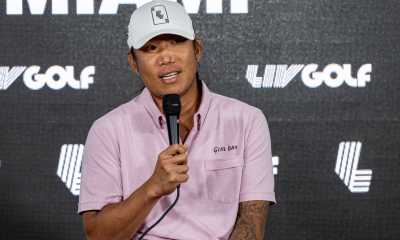











Daddygreen
Apr 24, 2022 at 5:28 pm
Grow the game=make more money. That’s all you care about…even if it’s watered down.
L
Apr 22, 2022 at 3:54 pm
Keep that game there, don’t let them export to the rest of the world. Gimme circle? Ridiculous. Can’t walk in a reasonable amount of time? Don’t build courses there. Sheesh
JL
Apr 22, 2022 at 3:52 pm
Everything at the Korean golf courses were copied from Japan, practically. Same mountain terrains, multi-person cart. Wicked OBs and tight fairways. The gimme circle was tested but scrapped because people wanted to get better at actually playing than be given something. Though it’s a great idea for pace of play, especially when the greens have wicked slopes and can lead to multiple putts, but people need to be allowed to play the game too.
Growing the game? Not like this, just to pump people out there with quick pace just so that the club and industry can make money? No way! Ridiculous.
But yeah accuracy of your shots is important and should be encouraged. lol
geohogan
Apr 21, 2022 at 12:36 pm
If these are the types of golf courses Korean pros grew up playing, then
maybe this help explains oeverwhelming dominance /success on the LPGA tour.
blackbd
Apr 20, 2022 at 2:53 pm
I found this article interesting but not sure if the author is trying to address the distance debate, speed of play or growing the game or all 3? I presume all 3 but not sure how it was all tied together? Also, that kind of super narrow and penal golf seems not fun. Not even sure I want to watch pros play that style other than once or twice a year.
CrashTestDummy
Apr 20, 2022 at 10:25 am
Interesting article. It always interests me how other countries play golf differently. I have played a few times in Asia before and the experience is totally different than the US.
From what I have seen, Korean golf courses look very tough and narrow. I watch a lot of Korean golf shows and you can tell the good player’s ball striking is very accurate, but you have to in order to score on Korean courses. Not like most of the “grip it and rip” it type courses in the US. The gimme circle makes up a little for the toughness of the courses. But definitely not enough. Lol.
neil
Apr 20, 2022 at 12:31 pm
lived in Korea 4 years
weather is great at least for a scotsman.basically 2 seasons warm and cold
Can be 40f one day 70 or higher the next until November then cold again..
we played through the winter down south near Busan.cold but comfortable miles better than a scottish winter
DaeGunn
Apr 20, 2022 at 10:10 am
Golf becomes No.1 sport in Korea. People in general can actually play (not just watch) and enjoy golf, compared with other watching-only sports. Fast growing golf related businesses in Korea may affect the acquisition of big name golf companies by Korean related funds or companies.
As a Korean-American, I heard a lot about Korean’s unique golf course settings nicely summarized in this article. At first, I thought those are very absurd. But as this article explained, I now understand that those are understandable and necessary.
It would be good to know each region’s or country’s different or unique golf cultures.
JungleJimbo
Apr 20, 2022 at 9:28 am
Hi James Chang: Thank you, for your Fabulously-written article that i enjoyed immensely! The Korean approach to golf is intriguing, and GolfWRX is all the better for your series of articles (and unique, i.e. i don’t see this Korean perspective on many other mainstream golf publications). “?????”!
Jub
Apr 20, 2022 at 8:55 am
No! Stop growing the game!
MhtLion
Apr 20, 2022 at 12:51 pm
That’s what I’m saying.
Garrett
Apr 22, 2022 at 12:48 pm
Im with you on that. not enough golf courses or CC around me to even get decent times. STOP GROWING THE GAME
Rascal
Apr 22, 2022 at 1:49 pm
Me! Me! Me!!!!
Waaaaaahh!